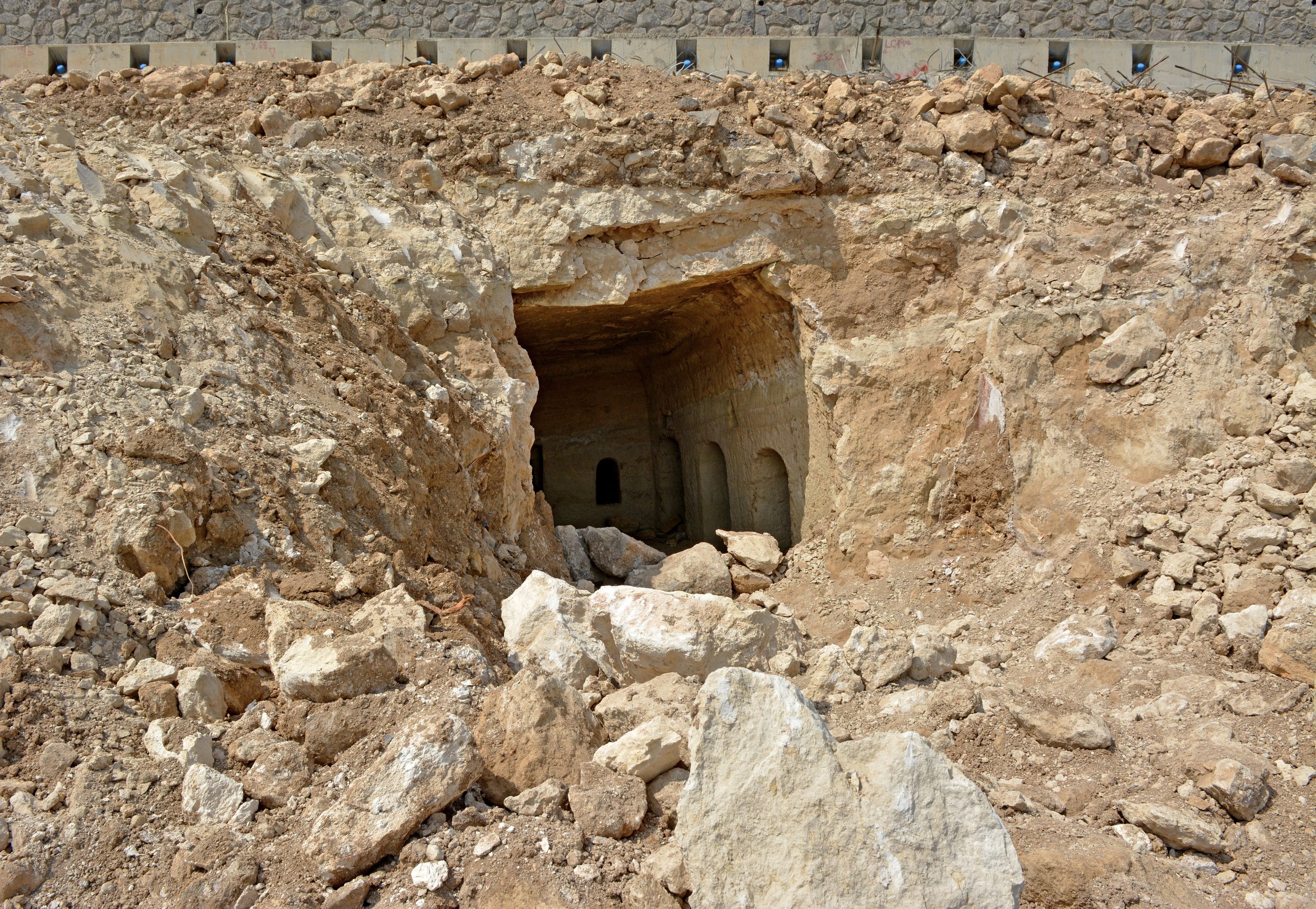A few days ago a 2000 year old burial cave was revealed in northern Tiberias. The cave was brought to light during construction on a new neighborhood. When the cave entrance was exposed by a mechanical digger, the contractor immediately informed the Israel Antiquities Authority (IAA), who sent an antiquities inspector to investigate the site.
The rock-hewn burial complex is comprised of a colorfully plastered entrance hall leading into a central room with several burial niches, and a small inner chamber. Although the tomb appears to have been looted in antiquity, several decorated ceramic and stone ossuaries were discovered inside. The stone doors leading into the entrances of the rooms were also decorated with carvings, and Greek inscriptions were engraved in one of the chambers, recording the names of the occupants.
The tomb's Central Room
Yair Amitsur, an Antiquities Inspector of Tiberias and Eastern Lower Galilee for the IAA, believes the burial cave probably belonged to a wealthy family, as evidenced by “the high quality rock-hewing, the complexity of the cave, the decorations, and the Greek inscriptions.”
Tiberias was established in 18 CE by Herod Antipas, and served as the capital of Galilee for centuries. Although Tiberias was one of the largest cities in the country, stretching from south of Hamei Tiberius to the center or the modern town, this high quality tomb is an “almost unique find in this area,” according to Amitsur. The owners of the cave must have been from Tiberias - or one of the smaller cities surrounding the capital during the Roman period - and likely favored the northern location of the tomb where it overlooks the Sea of Galilee.
A Decorated Ossuary
The Mayor of Tiberias, Yossi Ben David, stated that “the Tiberius Municipality together with the Ministry of Housing and the Israel Antiquities Authority undertake to conserve this amazing discovery, and to carry out changes in the plan in order to protect the cave.”
The burial complex was closed for it’s protection, and will be researched by experts from the Israel Antiquities Authority.
Photos Miki Peleg, courtesy of the IAA




